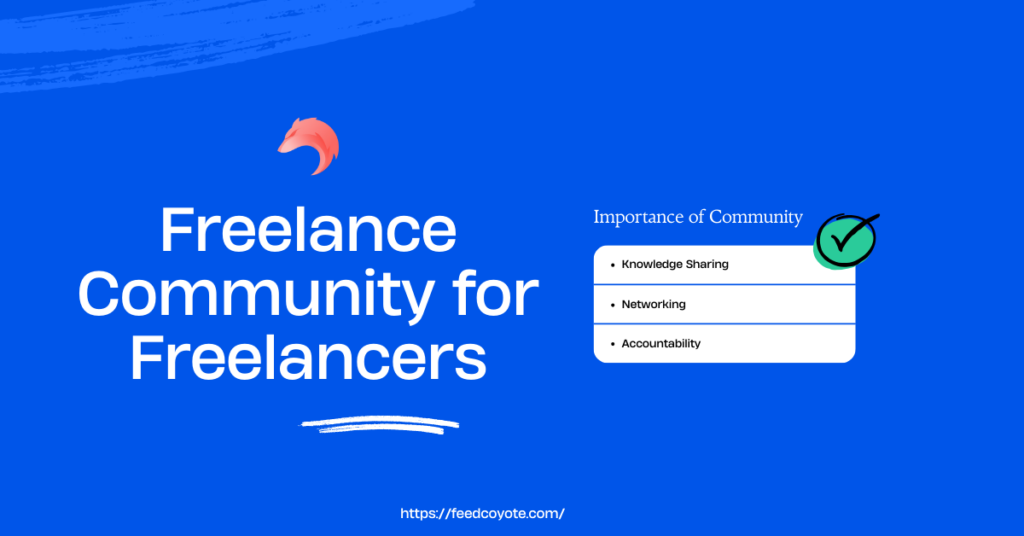Launching a new website is an exciting step for any business, but it requires careful planning and attention to detail to ensure a smooth launch. From the technical backend to design elements, functionality, and SEO, everything should be in perfect shape before you go live.
To help you avoid common pitfalls, here’s a comprehensive Website Launch Checklist with 20 critical tasks that must be completed before the big day.
1. Finalize Your Website Design
Your website’s design is the first impression visitors will have of your brand, so it needs to be flawless. Double-check that all design elements (fonts, colors, buttons, layouts) are consistent and aligned with your branding guidelines.
- Test Responsiveness: Ensure the design adapts seamlessly across all devices (mobile, tablet, and desktop). A mobile-friendly website is critical since mobile traffic accounts for over half of global web traffic.
- Check Browser Compatibility: Your website should look and perform consistently across all major browsers, including Chrome, Firefox, Safari, and Edge.
2. Test Website Functionality
Nothing frustrates users more than broken links, non-responsive buttons, or malfunctioning forms. A thorough functionality test ensures everything works as expected.
- Interactive Elements: Test all buttons, forms, sliders, pop-ups, and drop-down menus.
- Forms: Submit test forms (contact, sign-up, checkout) to check they send data correctly to your email or CRM.
- Links: Verify that all internal and external links direct users to the right pages.
3. Proofread Content for Accuracy
High-quality content plays a crucial role in keeping visitors engaged, establishing trust, and converting leads. Make sure your content is error-free, informative, and aligned with your messaging.
- Grammar and Spelling: Use tools like Grammarly to ensure flawless content.
- Clarity: Ensure your content clearly conveys the purpose of your website, with a strong call-to-action (CTA) on key pages.
- Replace Placeholder Content: Make sure all placeholder text (like “Lorem Ipsum”) has been replaced with actual content.
4. Review Content for SEO
Good SEO practices will help your website rank higher in search engines, bringing in organic traffic. Optimizing each page for SEO is essential.
- Title Tags and Meta Descriptions: Ensure every page has a unique and optimized title tag (up to 60 characters) and meta description (up to 160 characters) with relevant keywords.
- H1 and H2 Headings: Use target keywords in your H1 and H2 headings. Structure your content for easy scanning by users and search engines.
- Image Alt Text: Add descriptive alt text to all images for SEO and accessibility. Use target keywords where relevant.
- Keyword Density: Ensure you use your target keywords naturally throughout the content without overstuffing.
5. Test Page Load Speed
Page speed is a crucial factor for both SEO and user experience. A slow website can lead to high bounce rates and lower search rankings.
- Use Tools: Tools like Google PageSpeed Insights or GTmetrix can help you analyze load speed.
- Optimize Images: Compress large image files to reduce load times without sacrificing quality.
- Minify Code: Minify your CSS, JavaScript, and HTML to reduce file sizes and improve load speed.
6. Set Up 301 Redirects
If your website is replacing an older site or specific URLs are being removed, it’s vital to set up 301 redirects to guide visitors to the correct pages and avoid broken links.
- Maintain SEO: 301 redirects ensure you retain SEO rankings for old URLs while sending traffic to new ones.
- Avoid Broken Links: Check all links on your new site and implement redirects as necessary using tools like Screaming Frog.
7. Verify Mobile Responsiveness
With mobile devices accounting for a significant portion of web traffic, ensuring a seamless mobile experience is essential.
- Test Across Devices: Test your website on various mobile devices, including smartphones and tablets. Ensure images scale correctly, fonts are legible, and buttons are easy to tap.
- Mobile-Friendly Features: Enable features like tap-to-call for phone numbers or click-to-email for email links.
8. Check for Broken Links
Broken links can harm both the user experience and your SEO performance. Ensure there are no dead ends on your website.
- Use Link Checkers: Tools like Broken Link Checker or Screaming Frog can crawl your website and identify any broken or misdirected links.
- Fix Redirects: If you find broken links, either fix them or redirect them to relevant, live pages.
9. Set Up Google Analytics
Google Analytics is an indispensable tool for tracking your website’s performance post-launch. By installing Google Analytics, you can monitor:
- Traffic Sources: Discover where your visitors are coming from (search engines, social media, referrals).
- User Behavior: See how visitors navigate your site and which pages they interact with most.
- Conversion Rates: Track the success of your calls-to-action (CTAs) and sales funnel.
10. Install Google Search Console
Google Search Console (GSC) gives you direct insights into your website’s visibility and performance on Google search. By setting it up before your launch, you can:
- Submit Sitemaps: Submit your XML sitemap to help Google crawl your site effectively.
- Monitor Indexing: Keep an eye on any indexing issues or errors that may affect your ranking.
- Keyword Performance: Track the keywords your website is ranking for and optimize accordingly.
11. Implement an SSL Certificate
Security is non-negotiable for modern websites, and Google prioritizes sites with SSL certificates. Ensure your website runs on HTTPS for:
- User Trust: SSL encrypts user data, providing a secure connection that builds trust.
- SEO Benefits: HTTPS websites often rank higher than HTTP sites in search engine results.
12. Compress and Optimize Images
Images are a key visual element of any website, but they can also slow down your load times. Make sure all images are:
- Compressed: Use tools like TinyPNG or ImageOptim to reduce file sizes without losing quality.
- Optimized for SEO: Include descriptive file names and add alt text for accessibility and SEO purposes.
13. Ensure All Forms Are Working
Forms (such as contact forms, sign-up forms, and checkout forms) are essential for gathering user data and generating leads. Before launching, test:
- Form Submissions: Ensure that all form submissions are received correctly, and check that confirmation or thank-you messages appear upon submission.
- Email Routing: Verify that submitted data is sent to the correct email or CRM system.
14. Backup Your Website
Before making your website live, create a full backup of all files, databases, and content.
- Schedule Regular Backups: Automate backups on a daily or weekly basis using plugins or hosting provider services. In case something goes wrong, you can restore your website from the backup.
- Cloud or Offline Storage: Store your backups in a secure location, whether it’s in the cloud or on a physical device.
15. Enable Website Caching
Caching is a powerful way to speed up your website by storing a version of your pages in users’ browsers. This reduces load times for returning visitors.
- Browser Caching: Set expiration dates for cached resources, so users don’t have to reload your entire site each time they visit.
- Use Plugins: If you’re using WordPress, plugins like W3 Total Cache or WP Super Cache can automate the caching process.
16. Set Up a Custom 404 Page
When users encounter a broken link or missing page, a 404 error page will appear. Customize this page to offer helpful suggestions or navigation options.
- Design for Usability: Use a friendly, branded message and provide links to your homepage or popular sections.
- Track 404 Errors: Use tools like Google Analytics to track how often users encounter 404 pages, and fix broken links promptly.
17. Test Checkout Process (for eCommerce)
If your website has an online store, a seamless checkout process is critical to avoid cart abandonment. Test the entire checkout journey, including:
- Payment Gateways: Ensure payment gateways (like PayPal, Stripe) work correctly and securely process payments.
- Shipping Options: Verify that shipping options are accurately displayed, with correct pricing and estimated delivery times.
- Coupon Codes: Test any promo codes or discounts to ensure they apply correctly during checkout.
18. Check Legal Pages
Every website needs the appropriate legal documentation to comply with regulations and protect both the user and business. Ensure the following pages are included:
- Privacy Policy: Clearly explain how user data is collected and used.
- Terms and Conditions: Outline the rules for using your website or purchasing products.
- Cookie Policy: Inform users about the use of cookies and how they can manage them.
19. Review Social Media Integration
Social media plays a significant role in driving traffic to your site. Before launching, check:
- Social Sharing Buttons: Ensure sharing buttons are visible and functional on blog posts or key pages.
- Social Media Links: Verify that all social media icons direct visitors to the correct profiles.
20. Announce Your Launch
Prepare a launch plan to build anticipation and drive traffic once your site goes live. Consider:
- Email Campaign: Send an email announcement to your subscribers with a link to the new website.
- Social Media Posts: Promote your launch across social media channels, encouraging followers to visit and share your new site.
- Press Releases: For larger businesses, consider issuing a press release or collaborating with influencers to expand your reach.
Final Thoughts:
Launching a website involves much more than just clicking the “publish” button. By following this detailed 20-step checklist, you can ensure a smooth, successful launch with minimal issues. Taking the time to test everything beforehand will save you from headaches down the road and ensure your website performs optimally from day one.
Ready to Streamline Your Freelance Projects?
Join Feedcoyote today and unlock powerful tools designed to help freelancers like you manage projects, collaborate with fellow professionals, and grow your business. Whether you’re tackling large projects or seeking new partnerships, Feedcoyote makes it easy to stay organized and focus on what you do best.
👉 Sign up now and start collaborating with freelancers from around the world!




